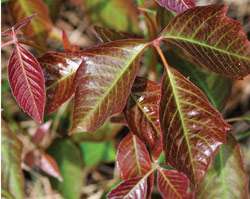
"Plants are in the business of making themselves inedible,” says Tom Vogelmann, a plant biologist at the University of Vermont. Being unable to run and hide from predators, they’ve spent millions of years figuring out other ways to fight back. Some have developed armor – tree bark, for instance, or thorns. Others employ more advanced chemical defense systems. These chemical mechanisms range from shock and awe (an herbivore who eats an amanita-type mushroom could drop dead) to on-the-sly (some wild yam species contain a contraceptive molecule that works to render a predator sterile – a brilliant bit of lose-the-battle, win-the-war strategy).
Walk through a poison ivy patch, or brush up against some stinging nettle, and you’ll learn firsthand about plant defense mechanisms. The resulting rash you’ll get, the annoying pain you’ll feel, isn’t personal – the toxins in these plants weren’t meant to target humans specifically. Still, the fact that we’re merely collateral damage in a chemical war that has been raging for eons is of little consolation to someone soaking in a bathtub full of calamine lotion.
There are dozens of plants in the northern forest that contain rash-inducing chemicals, including members of the celery, rue, mulberry, pea, and aster families. The human reaction to these chemicals (called furanocoumarins) is generally mild – think of the “do you like butter?” game you played as a child, where a buttercup held beneath a classmate’s chin would sometimes cause – instead of the expected yellow reflection – a minor red spot. Common plants, such as sunflowers, wild grapes, and clematis can be irritating to touch.
Other plant’s toxins are a bigger deal, though, and can cause itchy rashes and painful boils. The following represents a rogue’s gallery of common plants that can “bite” you.
Gonna Need An Ocean Of Calamine Lotion…
The king of Northeastern rash plants is, of course, poison ivy (Toxicodendron radicans). The plant can be identified by its almond-shaped leaves that have subtle teeth along the edge. The leaflets appear in clusters of three, and the middle leaflet has a longer petiole. Poison ivy grows both as a ground cover and as a woody vine that climbs trees by means of aerial roots. Western poison ivy (Toxicodendron rydbergii) is also found in the region, and appears as a straggling shrub. Both types of poison ivy prefer warm, rich sites over cooler, thinner, higher elevation sites.
If you brush up against any part of a poison ivy plant (or come in contact with a pet or a garden tool that has brushed up against a poison ivy plant), you might contract a rash. Rashes typically appear a day or two after you’ve touched the plant and are characterized by red swelling and small blisters. The intensity of the rash varies among individuals.
To understand why some people seem immune to the plant while others seem to get a rash just by looking at it, one must first understand the science behind the body’s reaction. Poison ivy contains a chemical compound called urushiol. When you touch the plant, the urushiol is transferred to your body and absorbed through your skin, where it binds harmlessly to your skin cells. Left to their own devices, your skin cells would simply metabolize the compound, and you’d never even know you’d touched the plant. But if the body’s immune system gets wind of things, all hell breaks loose.
Inside your body, your T-lymphocyte cells are constantly roaming around looking for invaders (high-school science teachers often analogize these to “cop” cells). If there are no T-cells in the vicinity, the urushiol compound will not be discovered and no rash will ever develop. But if the chemical is spotted, your T-cells call for military backup (killer T-cells) that swarm in, latch on, and release toxic enzymes. This is why it sometimes takes several days before the rash appears – it takes time for the cells to multiply and for reinforcements to appear. The enzymes destroy both the invading compound and your healthy skin cells. The effect is red blistering and an itchy rash.
Now some people’s T-cells, for whatever reason, don’t recognize urushiol. These lucky folks can roll in a patch of poison ivy with immunity…and impunity. If you’ve brushed up against the plant, though, with no ill effect, don’t be so sure you’re one of the lucky ones. Touching poison ivy is like playing Russian roulette – the more contact you have, the greater the chance of its “discovery” in your body. And once you’ve been sensitized, every time you touch the plant, the reaction will happen more quickly. This is why gardeners are often hypersensitive to poison ivy: they’ve been over-exposed, and their T-cells are just waiting to pick a fight.
All parts of the plant can give you a rash. If you burn poison ivy, urushiol can attach to smoke particles, which can land on your skin and infect you; worse, you can inhale the toxin, and it can severely damage your lungs. Washing does remove the oil, but it can also spread it. Air alone can not spread the compound. The liquid in blisters is harmless and will not spread the rash, but try not to scratch, as the bacteria in your fingernails may cause additional skin infections. Folk wisdom suggests that jewelweed sap will ease the rash, but at least two controlled clinical studies have shown that jewelweed is no more effective than a placebo in poison ivy treatment.
While the toxins in poison ivy are remarkably effective in keeping humans away (Leaves of three, let it be! Hairy vine, no friend of mine!), it doesn’t work as well on avian predators. The many species of birds that are fond of the berries are culprits in spreading the plant as they deposit seeds along their autumn flyways.
A Poisonous Cousin
One of the more mysterious plants in the Northeast, poison sumac (Toxicodendron vernix) is a small tree/large shrub, branched at the base, with compound leaves and grayish-white fruit. Unlike the staghorn sumac in your backyard that has serrated leaflets and hairy bark, poison sumac has smooth leaf edges and smooth bark. The plant exists throughout the region, but because it grows in wetlands, not many people typically see it. (Specifically, it favors fens, a type of stagnant wetland.)
According to Don Cameron, Botanist with the Maine Natural Areas Program, poison sumac is uncommon in northern Maine, both because of the cold temperatures and also because it prefers high pH (calcareous) wetlands. It is dispersed throughout the southern parts of the state, specifically Penobscot, Franklin, Oxford, Knox, Kennebec, Androscoggin, Cumberland, and York Counties. Distribution in New Hampshire is also limited to southern and central portions of the state.
The plant is more common in New York and parts of Vermont where, due to the limestone bedrock, the pH is higher. In Vermont, poison sumac is found in Chittenden, Addison, Rutland, Bennington, Windsor, and Windham Counties and is especially prevalent in the Champlain Valley. According to state botanist Bob Popp, it’s found in shrub swamps, hardwood-cedar swamps, and calcareous red maple/tamarack swamps. In New York, it’s found throughout the state in calcareous wetlands. Rich Ring, botanist for the New York Natural Heritage Program, says that while poison sumac itself isn’t rare, there are many rare plants in New York that are associated with fens. As such, poison sumac is considered an important indicator of fen habitats.
Like poison ivy, poison sumac contains urushiol, so the rash is similar in appearance. In our national consciousness, poison ivy, poison sumac, and poison oak are often lumped together as plants we should watch out for. Northeasterners need not worry about poison oak, though. It struggles to grow north of the mid-Atlantic states.
Danger In The Carrot Family
To the untrained eye, many members of the carrot family look alike. Poison hemlock and spotted water hemlock can be confused with Queen Anne’s lace; wild parsnip can be confused with cow parsnip, which can be confused with giant hogweed, which can be confused with great angelica. Of all the plants just mentioned, though, only wild parsnip and giant hogweed contain sap that will significantly irritate your skin. (The hemlocks are very poisonous, but only if eaten).
Wild Parsnip (Pastinaca sativa), sometimes called poison parsnip, is an aggressive, non-native plant with a habit of rapidly colonizing disturbed areas. The plant has large, pinnately compound leaves that resemble celery leaves. The stem is hollow and grooved, two- to five-feet high. The flowers are small, yellow, five-petaled, and look like a yellow Queen Anne’s lace. Wild parsnip often grows along the edges of highways, which makes highway road crews and roadside mowers especially vulnerable to the poison sap. The rash is characterized by burnlike blisters that often form in splatter formations, or streaks; these patterns relate directly to sap dispersal as the plant is dragged across your skin.
The toxin in parsnip sap is different from the toxin found in poison ivy or poison sumac; the reaction your body has to it has nothing to do with your immune system, and everyone is susceptible. The harmful chemical compounds – specifically, psoralen and its derivatives – are photosensitizing, which means they’re activated by ultraviolet radiation from the sun. (Smear yourself with parsnip sap in a dark closet, and nothing will happen.)
When you get some sap on your skin, the sap absorbs solar energy, then releases it in the form of heat. On a micro level, the psoralen molecule lodges between two strands of DNA, and sunlight fuses the strands together. “You can imagine what this does to an insect that tries to eat the plant,” says Vogelmann.
The chemical reaction damages skin cells and feels very much like a burn. This is a key difference between the phototoxic dermatitis caused by poison parsnip and the allergic contact dermatitis you get from poison ivy. Parsnip burns feel like burns, whereas poison ivy rashes are often more itchy and irritating than painful.
While the pain from a parsnip burn is relatively short-lived, an encounter can leave long-lasting scars. As part of the recovery process, the body produces dark pigmentation that is thought to serve as a protective mechanism against further UV injury (sort of a super-suntan). These dark splotches can linger on the body for years. In an interesting twist, people with psoriasis and similar skin-pigment disorders sometimes turn the toxin to their advantage and use psoralens to help increase their skin’s sensitivity to ultraviolet light.
As its name indicates, wild parsnip is directly related to the edible parsnip growing in your garden. Like its domestic counterpart, the roots of wild parsnip are safe to eat and, by some accounts, quite delicious (especially in late fall or very early spring, after the plant has had time to convert its root starch to sugar). Take the time to properly identify the plant before you eat it, though, since other look-alike members of the carrot family have highly poisonous roots that could kill you.
Giant hogweed (Heracleum mantegazzianum) is wild parsnip on steroids. It’s an enormous plant that reaches heights of 14 feet. Its leaves – sometimes four feet long – are sharply and unevenly lobed. Stems are hollow with purple blotches and coarse hairs. The flowers are white, flat-topped, and can be 20 inches across. Originally brought to the Northeast as a garden plant, it has now spread and is colonizing meadows, streambanks, roadsides, and open wild spaces. The sap in giant hogweed is just as toxic as wild parsnip sap, and there’s more of it. Unlike parsnip, it has yet to become firmly established throughout the Northeast, and state agricultural agencies are trying to keep it that way. If you find giant hogweed growing in the wild, contact your local “hogweed hotline” and report the plant.
The Nettlesome Family
Stinging nettle (Urtica dioica), as its name suggests, stings. The stem and leaves of this plant contain thousands of tiny silicatipped hairs – imagine them as minute hypodermic needles.
When you brush up against the plant, these hairs penetrate your skin, break off, and release an irritating fluid. The toxin was originally thought to be formic acid, similar to what ants emit, but recent research has revealed it to be a combination of different chemical compounds. A nettle sting doesn’t cause a lingering rash like the previously mentioned plants, but it does hurt enough to make you wish you’d worn long pants while hiking.
Stinging nettle is a native plant that grows two to four feet tall. The plant loves nutrient-rich sites, including moist woodlands and river bottoms. It’s often found growing on compost or manure piles, often in shady parts of the garden.
Many people eat nettle leaves. “They’re fantastic,” says Vogelmann, who describes the flavor as pleasing and unique. To pick nettles, Vogelmann looks for plants that are 1–2 inches tall and picks them with gloves or a plastic bag over his hands. At home, he puts them in a large plastic bag, fills the bag with water, and shakes it. This washes the leaves and destroys the stinging hairs. Afterwards, the nettles are painless to handle and eat.
Online recipes abound for nettle pesto, nettles sautéed in bacon fat, and savory nettle soups. The leaves of the plant are high in calcium and iron, and many foragers tout their anti-inflammatory qualities.
Wood nettle (Laportea canadensis) is another native, common species of riparian forests and rich, forested slopes. The plant can form dense carpets in river-bottom floodplains; this serves as an especially nice bit of habitat for small woodland creatures. Wood nettle can be distinguished from stinging nettle by the fact that it has alternate leaves instead of opposite leaves; the leaves are also broader and wider. Wood nettle has fewer stinging hairs, but they can still hurt when you brush up against them.
Keeping It In Perspective
The great risk of profiling hurtful plants in a magazine is that by the end of the story, a reader could be left with a lingering paranoia of anything green. It doesn’t have to be this way. The experienced trout fisherman easily circumvents the patch of wood nettle growing along a mountain stream. The gardener learns to cultivate soil away from the hedgerow full of poison ivy. The landscaper instructs his crew to remove roadside wild parsnip with a sicklebar mower, not a weed-wacker.
Whereas these plants use their poison as a defense mechanism, our human defense mechanism is our mind. Learn to identify these plants and avoid them. In most cases, that’s the only defense you’ll ever need.
Hogweed Hotline
If you find Giant hogweed growing in the wild, let someone know.
Vermont: 802-828-1246
New Hampshire: 877-398-4769
Maine: 207-287-3891
New York: 845-256-3111
Massachusetts: 617-626-1779


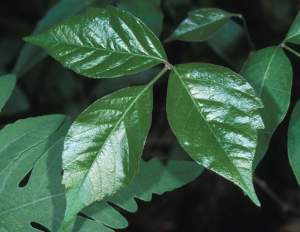
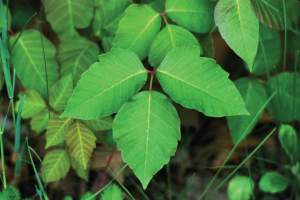
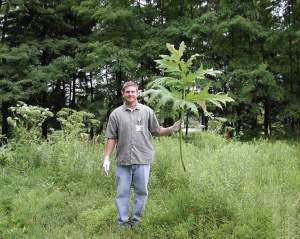
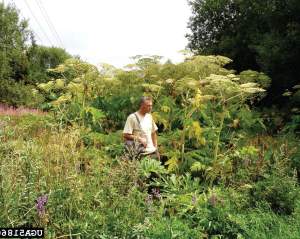
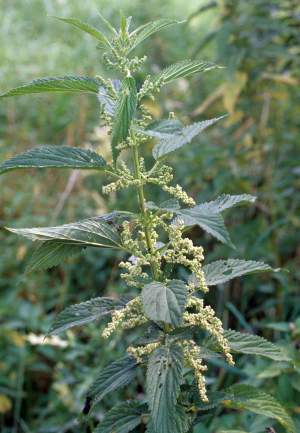
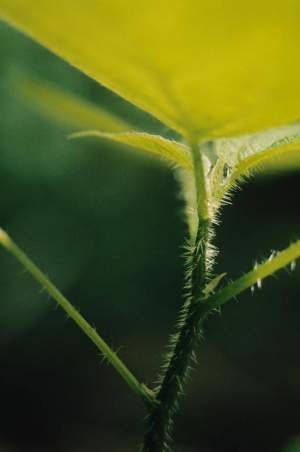
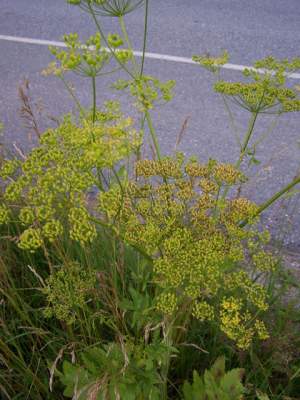
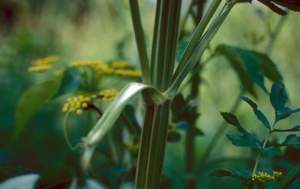
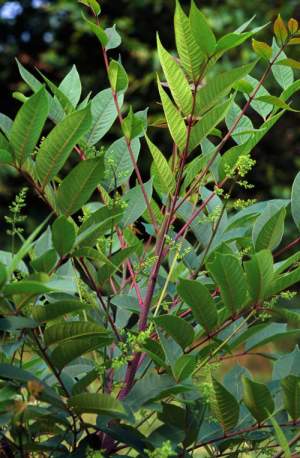
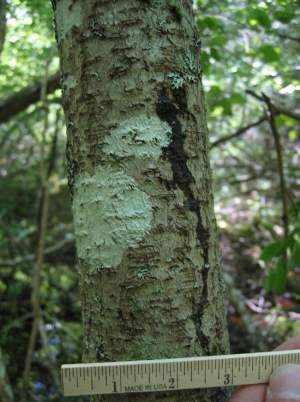
Discussion *